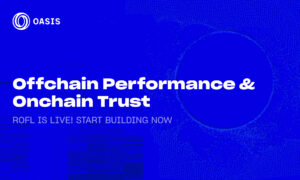There’s a storm brewing in the tech world, and most businesses don’t see it coming. While companies rush to embrace AI’s promises, fraudsters are turning these same tools against us, crafting scams so sophisticated they slip right through standard security nets. The price tag? $9 trillion in 2024 alone. That number keeps tech veteran Chris Sham up at night. As COO of faceEsign, he’s watching this perfect storm gather strength – deepfakes, synthetic identities, and AI-powered fraud schemes that could sink unwary businesses. The question isn’t if these threats will hit, but who’ll be ready when they do.
Understanding the New Wave of Fraud
The fraud situation is different than before; it’s not like the easy credit card scams of previous times. Now, fraudsters use new tools that cost businesses more. Chris states that, “These aren’t just hypothetical risks—they’re active vulnerabilities threatening billions of dollars annually,” pointing out the main problem very clearly.
The cost of cybercrime is staggering, projected to rise from $9 trillion in 2024 to $14 trillion by 2028. AI-driven threats, including deepfakes, generative AI and synthetic identity theft, are fueling this surge, with U.S. losses expected to climb from $12 billion in 2024 to over $40 billion by 2027. The demand for advanced solutions has never been more critical.
Most consider AI as a tool for business, making work fast and easy to process. However, Chris views AI’s negative aspects, as fraudsters create deepfakes and sophisticated phishing methods that can trick anyone. This is not a science fiction, it’s happening now, and it becomes worse over time. These attacks aren’t random either; rather, these are complex systems targeting businesses’ crucial parts like digital systems and monetary transactions. These tools are developing faster, but many companies aren’t prepared for it.
Recognizing the Urgency
Chris explains the reality as it stands today. He warns that “over the next 1 to 3 years, companies will go down, and even big ones will suffer many losses.” The speed of change surprises many, as he explains further that “Technology does not ‘grow up’ in the way we do, it evolves too fast. It may go from a hut to an entire high-rise in a very short time.” This rapid change means old security actions won’t be enough and businesses will require new equipment that can handle these new threats that are emerging every day. This explains the importance of Chris’s work at faceEsign.
Adopting Smarter Solutions
A better solution is smart technology, not just better technology. faceEsign employs patented countermeasures designed to be impervious to deepfakes and AI-generated fraud. Unlike traditional methods that rely on complex tools or on static measures like photo IDs and data checks, faceEsign differentiates real people from digital fakes through dynamic, real-time analysis. It is the difference between a wall and a very dynamic shield that moves along the attacks to stay up to date.
Chris understands that many are not aware about the coming danger. “It’s hard to fully grasp the speed and scale of this evolution,” he admits. He further states, “But, even if you are not able to fully understand, it’s good to be ready, that’s what I’ve been doing, to ensure you’re safe for whatever is coming.”
The future of avoiding fraud is not just about stopping individual attacks but building a system that stays up to date as fast as new risks. While businesses are still dealing with previous problems, Chris and his team are already preparing for the future fights. For all the companies noticing increasing losses from fraud, the message is simple: change now, or lose more money later, as the tools to fight all threats are available. Now the main question is whether companies apply them before their losses become big to ignore.
To learn more about Chris D. Sham and faceEsign, check out his LinkedIn profile or visit his website.



































